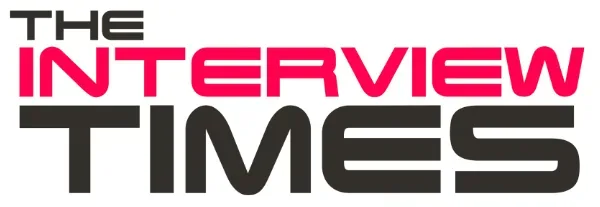Discover how SWAYAM, eVidyaloka, and other online learning platforms are empowering rural Indian students in 2025 by overcoming connectivity and affordability barriers.
In rural India, home to over 65% of the nation’s population, access to quality education has long been hindered by limited internet, scarce resources, and financial constraints. Yet, innovative online learning platforms are reshaping this landscape, delivering affordable and accessible education to students in remote areas. From government-backed initiatives to non-profit efforts, these platforms are bridging the digital divide with creative solutions. The Interview Times explores five standout platforms revolutionizing education for rural Indian students.
SWAYAM and DIKSHA: Free Education for All
The Indian government’s SWAYAM and DIKSHA platforms, launched under the National Education Policy (NEP) 2020, are transforming rural education by offering free, high-quality resources. SWAYAM provides online courses for K-12 and higher education in multiple Indian languages, while DIKSHA focuses on school-level content, including video lectures and e-books.
To tackle connectivity challenges, DIKSHA offers downloadable materials for offline use, ideal for areas with unreliable internet. Additionally, SWAYAM Prabha, a network of DTH TV channels, broadcasts educational content directly to homes, bypassing the need for internet access. Supported by the BharatNet initiative, which extends broadband to rural gram panchayats, these platforms ensure wide reach. By eliminating costs, SWAYAM and DIKSHA empower millions of rural students to access quality education.
eVidyaloka: Global Teachers, Local Impact
eVidyaloka, a non-profit initiative, connects volunteer teachers from across the globe with rural Indian students through digital classrooms. Operating in areas with limited teacher availability, it delivers interactive lessons in regional languages. The platform optimizes video conferencing for low-bandwidth networks, ensuring smooth delivery even in areas with spotty internet. In regions with no connectivity, eVidyaloka sets up offline digital classrooms through local partnerships.
Funded by donations and corporate social responsibility (CSR) initiatives, eVidyaloka is free for students, removing financial barriers. Events like Rubaru, which foster rural-urban educational exchanges, further enhance engagement. By addressing teacher shortages and promoting interactive learning, eVidyaloka is making a significant impact in rural communities.
Skill Darpan: Mobile Learning for the Masses
Skill Darpan, an emerging ed-tech startup, brings quality education to rural students via mobile devices. With 94% of rural Indian households owning at least one smartphone, the platform optimizes its app for low-cost devices, ensuring accessibility. Its offline mode allows students to download lessons, enabling learning in areas with poor or no internet connectivity.
Skill Darpan’s courses, offered at low or no cost through partnerships, feature gamified content in regional languages, moving away from traditional rote learning. This approach boosts student engagement and makes education both fun and effective, catering to the unique needs of rural learners.
Kolibri: Offline Education for Remote Regions
Developed by Learning Equality, Kolibri is an open-source platform designed for low-resource environments. It operates entirely offline, with content pre-loaded onto local servers or USB drives, making it ideal for remote areas without internet access. Compatible with low-cost tablets and laptops, Kolibri delivers interactive lessons and real-time progress monitoring.
Free to use and supported by NGOs and government programs, Kolibri empowers rural students with engaging content tailored to local curricula. Its ability to function without connectivity makes it a game-changer for regions where infrastructure remains a challenge.
Must Read: Top 10 Free Online Libraries: A World of Books at Your Fingertips
Kalvi TV: Education Through Television
In Tamil Nadu, Kalvi TV, a state government initiative, brings education to rural homes via television, accessible to 54% of rural households. By broadcasting classes in local languages, it eliminates the need for internet or smart devices, ensuring inclusivity. For areas with limited connectivity, Kalvi TV supplements broadcasts with asynchronous resources shared via WhatsApp.
Completely free, Kalvi TV played a critical role during the COVID-19 pandemic, maintaining educational continuity. Its focus on regional content ensures students in Tamil Nadu’s rural areas stay connected to their studies.
Overcoming Rural Education Challenges
These platforms address key barriers to rural education in innovative ways. Localized content in regional languages enhances accessibility, while smartphone optimization leverages widespread device ownership. Offline capabilities, such as downloadable lessons and TV broadcasts, ensure learning continues in low-connectivity areas. Government initiatives like BharatNet and PM eVIDYA are expanding internet access and digital literacy, further supporting these platforms. Community-driven models, such as group study programs in villages like Bhadole, Maharashtra, maximize limited resources by enabling shared device use.
Must Read: The Science Behind Effective Study Habits
The Road Ahead
Despite these advancements, challenges persist. Unreliable electricity and internet in remote areas require continued investment in infrastructure, such as BharatNet’s broadband expansion. Digital literacy training for teachers and students is essential to maximize platform benefits. Gender disparities, with lower female participation in online education, demand targeted interventions. Scaling these initiatives to more regions will require sustained funding and public-private partnerships.
A Brighter Future for Rural Students
Platforms like SWAYAM, eVidyaloka, Skill Darpan, Kolibri, and Kalvi TV are paving the way for equitable education in rural India. By overcoming connectivity and affordability barriers, they empower students to break the cycle of poverty and compete in a global economy. As technology and infrastructure continue to evolve, these innovations promise a brighter future for millions of rural learners.
The Interview Times is committed to covering education and technology trends shaping India’s future. Subscribe for the latest updates and share this story to spread awareness.

